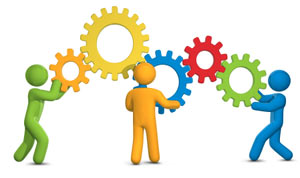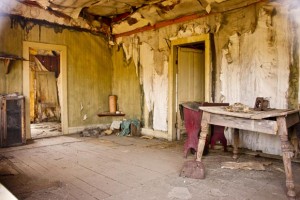 If only I’d realised, 100 years ago in a former existence, when I was handed HCI 101 to study (HCI=Human Computer Interface), that it could be so interesting.
If only I’d realised, 100 years ago in a former existence, when I was handed HCI 101 to study (HCI=Human Computer Interface), that it could be so interesting.
I went to the final Brunch Bytes session for this season, to hear John Hardy, from HighWire at Lancaster University, talking about interactive surfaces. Yes: being able to use tables, walls, floors…any handy surface, to interact with computers, rather than the typical screen/mouse/keyboard trio of today. And maybe not just 2D flat surfaces, but the surfaces of 3D things in the future.
I know, a long, long way from the corporate website of today. But here’s the thing…
What if?
One of the central themes of his presentation was about how the tools we use dictate not only process, but also group dynamics, and even the output.
He and his colleague Chris Bull set up an interactive desk for collaborative software development. Using this desk, each could see what the other was working on, and share code, since the project was represented/displayed on the table they were working on. For instance, they could ‘pull’ a piece of code from their colleague by literally reaching out and dragging the visual representation of that code across the table into their own workspace, also demarcated on the table. The other would be peripherally aware of this while continuing to work on their own code elements – and could instantly engage in discussion across the desk if necessary.
Setting up experimental tasks using different styles of working to test this collaborative tool, they found that:
- visual representation of actions, architecture and project status improved communication between the group
- people wrote better quality code, faster
- people changed how they worked in order to use the collaborative features of the tool.
The point is that being able to perceive what others were doing as they were doing it—and understanding how that might affect your own work—made a significant difference to the quality of output.
It doesn’t matter that this project revolved around programming. It would work just as well for high-level design, or for determining information architecture… maybe even content development. Perhaps for any piece of work that involves individuals on a small team, developing modular items that are interdependent and need to fit together as an internally consistent and coherent whole.
Corporate website development, anyone?
The really interesting question is whether the processes and development cycles that such things go through could be enhanced by changing the tools we use. And, of course, whether the output would be better with a different tool. Are we hindered by the 2D mindset imposed by the tools we’ve used to date; or have they been so successful because they are best fit for our mental processing?
The related question of how corporate communication might be changed in a move away from 2D screen-based/paper-based communication templates is even more interesting – and a topic for another day.
Lucy is Editor at Corporate Eye



Nice article, John pointed me this way.
I like your example with corporate sites, and I guess we can extend the analogy widely.
The table surface and John’s work on flexible projected interfaces mediates lots of novel relationships. It perhaps breaks us out of the hci dyad of one interface + one human.
Multiple controllers of a shared environment experienced in the same physical interface – cool stuff worth exploring. it’s like air traffic control rooms for homes and orgs!;)
Paul